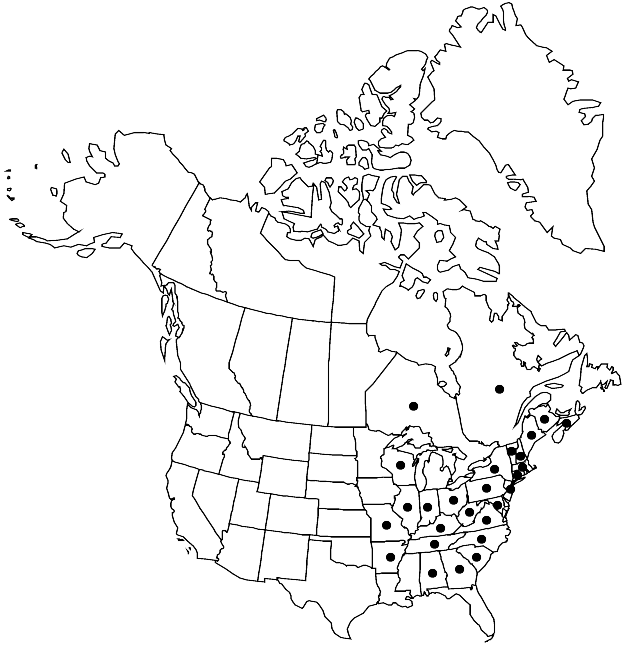Thamnobryum alleghaniense
Amer. Midl. Naturalist 5: 51. 1917.
Plants (3–)5–8(–10) cm. Secondary stem leaves 2–3.5 × 1.4 mm. Branch leaves ovate, 1.5–2 × 0.5–0.6 mm; margins coarsely serrate at apex; apex acute to acuminate; basal laminal cells 6–10 × 1–2 µm; medial juxtacostal cells short-rhomboidal, longest axis 45° to costa, 3–5 × 1–2 µm; apical cells elongate-rhombic, 3–5 × 1–2 µm. Sexual condition synoicous or autoicous.
Habitat: Rock, logs, deeply shaded wet rock ledges, limestone cliffs, sandstone of Tsuga hardwood forests, mixed deciduous forests
Elevation: moderate elevations
Distribution

N.B., N.S., Ont., Que., Ala., Ark., Conn., Ga., Ill., Ind., Ky., Maine, Md., Mass., Mo., N.H., N.J., N.Y., N.C., Ohio, Pa., S.C., Tenn., Vt., Va., W.Va., Wis., Europe, Asia (China).
Discussion
Thamnobryum alleghaniense is distinguished by the elongate-rhombic apical cells of the branch leaves, and by the longest axis of medial cells near the costa oriented at a 45° angle. The branches are incurved when dry.
Selected References
None.
